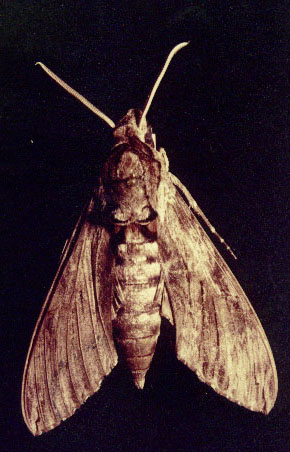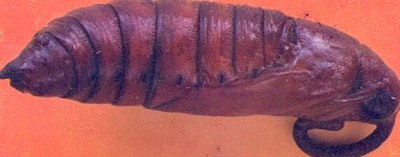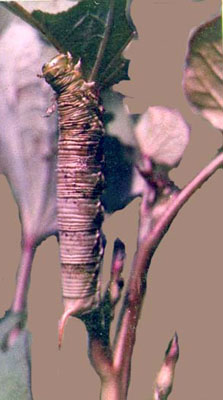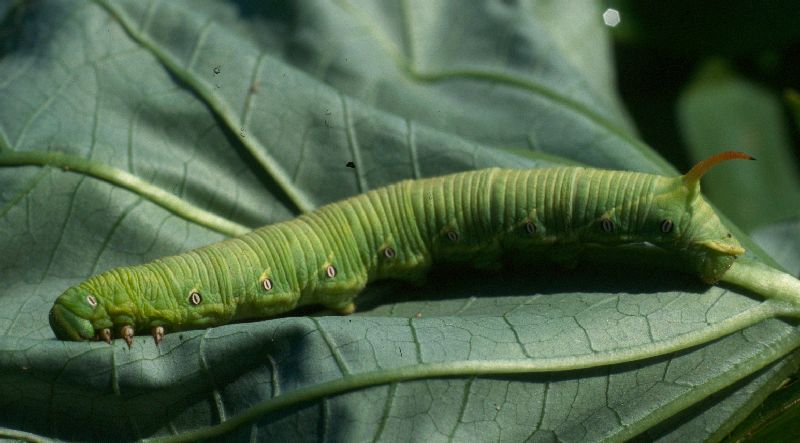sweet potato hornworm life cycle
August 2014 Plano Texas. This is a Hornworm in the family Sphingidae and we believe it is the caterpillar of a Pink Spotted Hawkmoth Agrias cingulata also known as the Sweet Potato Hornworm.
Note colours range from green brown to black.

. The total life cycle ranges from 22 to 60 days. Braconid wasps often lay their eggs on the bodies of the hornworm larvae. It can also be found in the Galápagos Islands and Hawaii.
They are nearly spherical in shape whitish or greenish and measure about 135 mm in diameter. Pupal period is 5 to 26 days. Once eggs hatch larvae immediately begin feeding and they feed continually for approximately one month.
Individuals can grow to 1075 mm. Larvae eventually drop from plants to pupate ie transform from larvae into moths. Newly emerged grubs feed for about 3 weeks before pupating in the soil.
It feeds during the day and the night on sweet potato Ipomoea batatas Datura species and other plants. Larvae feed on plants in the Convolvulaceae family especially Ipomoea batatas sweet potato and in the Solanaceae family especially Datura. Pupation takes place in the soil.
Frequently they are found at the shoot tip preferring young succulent leaves. Sweet Potato Hornworm Pink Spotted Hawkmoth. Sweet potato hornworm larva Agrius convolvuli.
When pupation takes place the immature wasps spin small white silken cocoons that protrude from the body of the still-living caterpillar Figure 12 Crockett et al. Both species feed on common garden plants like tomatoes potatoes peppers and eggplants. August 6 2014 827 am.
According to the Sphingidae of the Americas website. Life Cycle and Description. Found this Hornworm on our patio this morning after a thunderstorm last night.
The cocoon-covered hornworms are a sight. Sweet potato weevil Cylas formicarius Fabricius Coleoptera. The life cycle of the gold tortoiseshell beetle Aspidomorpha eevata ranges from 3 to 6 weeks depending on environmental conditions.
It will take a bit of practice but you will get extremely adept at finding the worms within 4 to 6 inches of the fresh droppings. By the fourth instar larvae consume more food both by day and night and growth becomes more rapid. I do have container tomato plants nearby but havent seen a brown hornworm before.
Symptoms Life Cycle The caterpillars do the damage. Eggs are laid singly on the lower surface of leaves. Pupation occurs in the soil and adults emerge 2 to 4 weeks later to lay second generation eggs.
Pupa 111-68 Latya Adult. 35 40 days in summer 5 8 generations a year 75- 90 eggsfemale Egg. They are active at night.
Symptoms Life Cycle The caterpillars do the damage. The eggs are deposited singly on the underside of the foliage. A few days later eggs hatch.
Larvae feed on the foliage for about three weeks and then they burrow into the soil where they pupate. When the eggs hatch the larval braconids feed inside the caterpillar. 8-16 2nd inst12-21 3rd inst15-26.
When theyre ready to pupate the braconid wasp larvae chew their way out of their host the unlucky hornworm and spin silk cocoons on the caterpillars exoskeleton. This highly variable caterpillar is commonly called the Sweet Potato Hornworm and according to Bill they feed on plants in the Convolvulaceae. The biology of this insect is not well documented.
When fully grown most larvae only emerge at night to eat. The pictures below show the life cycle stages of the hornworm. They eat the leaves often right down to the leaf stalk.
Several generations per year are possible. The number of generations is reported to be at least two in North Carolina and probably more in Gulf Coast states. Agrius cingulata Sweet Potato Hornworm Pink Spotted Hawkmoth is a species of Lepidoptera in the family sphinx moths.
They visit flowers of papaya morning-glory papaya and Prickly Pears. Sweet potato hornworm moths are present from June to September. During summer the entire life cycle is often completed in 30 days.
Sweet Potato Hornworm. It is known as a pest of sweet potato. If you spot them a tiny hornworm is near.
This is exactly what you should be looking for as you walk your plants. Though Bill Oehlkes very comprehensive Sphingidae of the Americas website does not have a color match to your specimen we nonetheless suspected that this was the larva of the Pink Spotted Hawkmoth Agrius cingulata. In Missouri there may be one or two generations depending on location.
The larvae hatch a week later and feed on foliage and fruit for three to four weeks until reaching full development. The tiny adult wasps emerge from these cocoons a short time later. Pupa of sweet potato hornworm larva Agrius.
They change their colour to green brown and occasionally yellow. These wasps deposit their eggs inside the hornworms body and the larval wasps develop within the caterpillar feeding on it as they progress through their life cycle. There are a few species of hornworms that inhabit North American gardens including tomato hornworms Manduca quinquemaculata and tobacco hornworms Manduca sexta.
This is mainly a neotropical species and the adults migrate north to Canada and south to Patagonia and the Falkland Islands. Frequently they are found at the shoot tip preferring young succulent leaves. The adult female wasp uses her ovipositor to lay eggs just under the skin of the hornworm.
They resume activity in spring and begin to deposit eggs in soil near host plants. The greenish eggs which are spherical measuring 1-2 mm diameter are laid singly on the leaves and stems. The droppings from a young hornworm look nearly identical to coffee grounds.
On August 7 2014 Category. Hornworms 2 Comments. Sweetpotato LCM technica manua hosts for armyworms and should be eliminated when armyworm populations.
5-12 days Ist inst. They eat the leaves often right down to the leaf stalk. About 30 days Life cycle.
Trichogrammatid wasps offer natural control by parasitizing hornworm eggs. Heres how to tell which. They hatch in about 4 days.
In the upper Midwest up to two generations of hornworms can occur per year. The egg stage and early instar larvae are often preyed upon by various predatory insects such as lady beetles green lacewings and predatory wasps.

Are They Sweet Potato Hornworm Moths

Vegetable Hornworm Tomato Center For Agriculture Food And The Environment At Umass Amherst
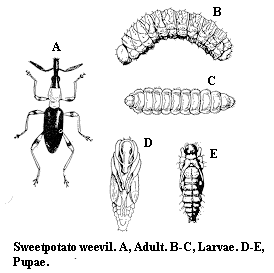
Pests Of Sweetpotato Nc State Extension Publications

My Hawaii Nature Journal Hawaii Nature Journal
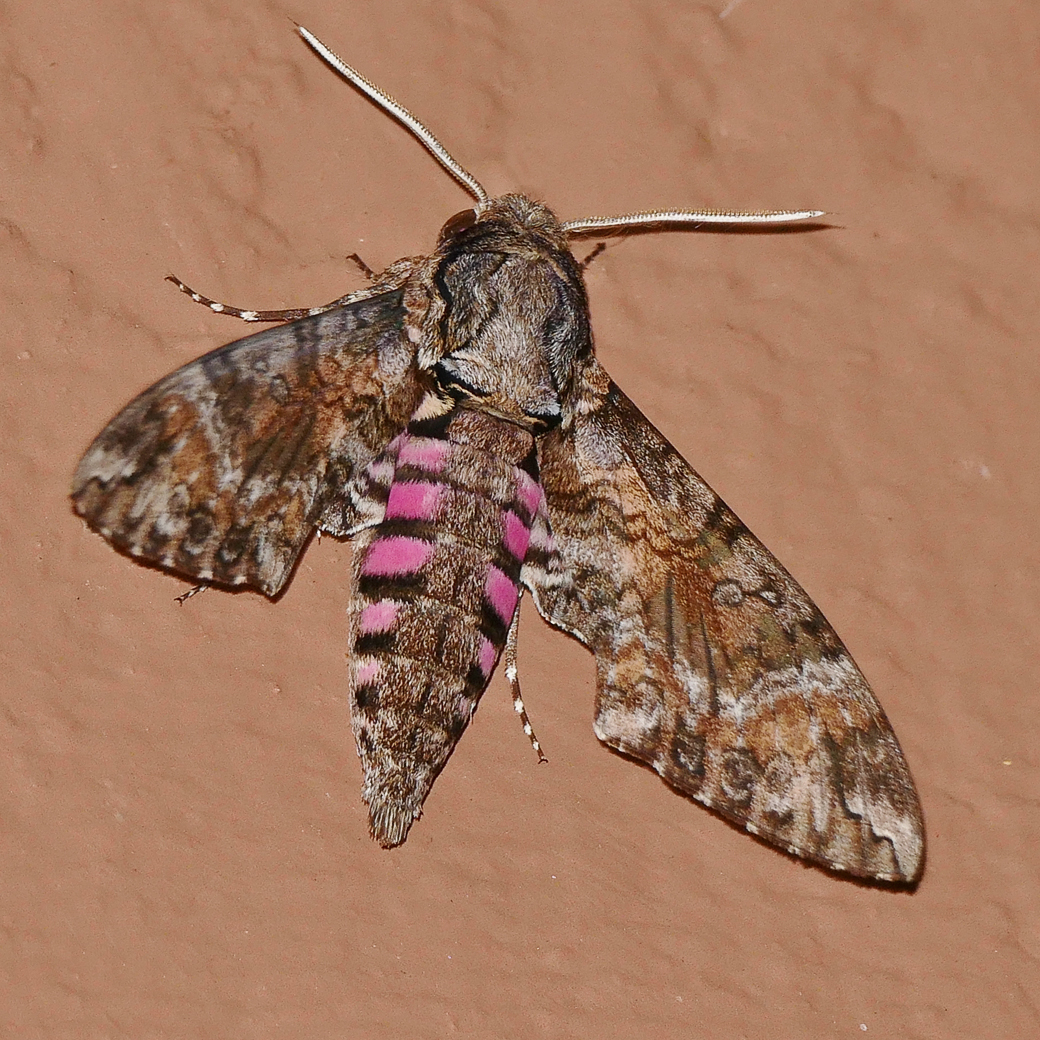
Sweet Potato Hornworm Pink Spotted Hawkmoth Encyclopedia Of Life
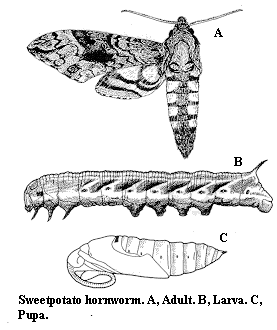
Pests Of Sweetpotato Nc State Extension Publications
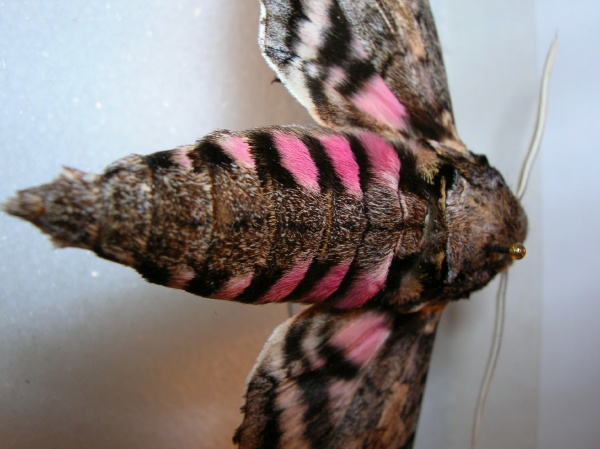
My Hawaii Nature Journal Hawaii Nature Journal
Sweet Potato Ipomoea Batatas Interactions
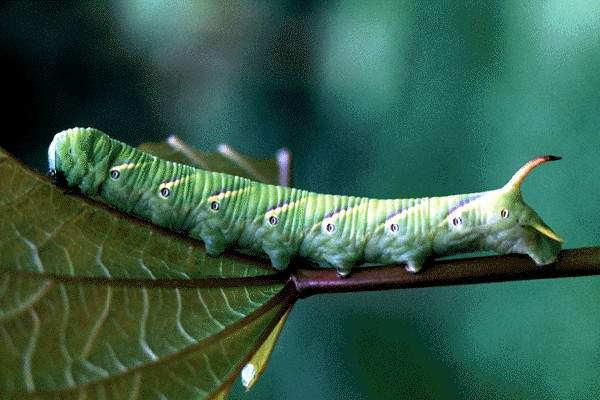
Sweet Potato Infonet Biovision Home
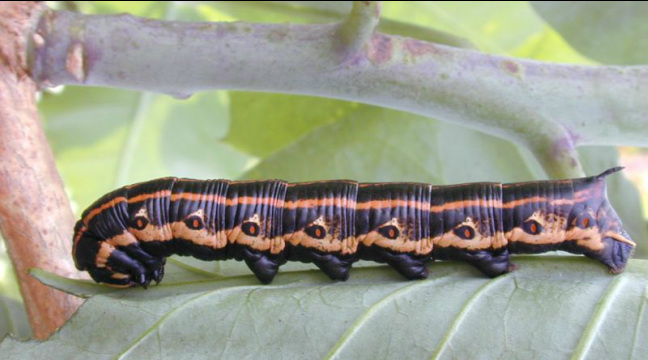
My Hawaii Nature Journal Hawaii Nature Journal

Fact Sheet Sweetpotato Hornworm 027
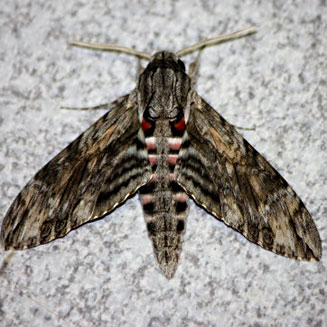
Agrius Convolvuli Convolvulus Hawkmoth Sweet Potato Hornworm

